Computer screen use via a laptop, desktop, tablet or smartphone has become a permanent mainstay in our lives. We use them at work, school, home and on-the-go. Furthermore, many of us have a habit of never giving our eyes a break, viewing multiple screens at once including televisions. That’s a lot of screen time and a recently published report by the Academic Journal says it’s taking its toll on our eyes. An estimated 45 to 70 million people spend numerous hours daily staring into a computer screen.
Several studies have shown an association between computer use and visual health symptoms. This is called Computer Vision Syndrome (CVS) and occurs in both young and older adults. CVS is a condition likely to get worse as we place even more dependence on technology in the future. The most common symptoms include:
-
Headache
-
Eye strain
-
Double vision
-
Dry eyes
-
Eye fatigue
-
Other symptoms of eye strain
The Academic Journal report theorized a correlation between a lack of blinking and viewing blurry images/text on screens for causing CVS. People normally blink approximately 17 times per minute; this drops to 12-15 times per minute during computer use. A reduction in blinking leads to dry eyes or a burning sensation in the eyes. Likewise, the eyes have to work harder to focus on text and images on a screen made up of pixels with blurry edges. This may lead to eye strain, blurry or double vision and headaches — all symptoms of CVS.
Omega 3 and 6 Assist Eye Health
Eye health depends on proper dietary fats. The large optic nerve behind the retina relays signals from the eye to the brain so we can see clearly. Nerves are huge, elongated cells composed of membranes made of essential fatty acids. As we age, the blood supply to the eye becomes weaker. The retina is the back of the eye where the “picture is taken” and relayed to the brain. Omega 3 and omega 6 fatty acids support the blood vessels that feed the retina and build the nerve sheath of the optic nerve.
Omega 3 Found to Improve Dry Eye Symptoms
Dr. R. Bhargava of the Laser Eye Clinic in Noida, India has also been studying the effects of CVS. In his study, researchers recruited 478 people with dry eye symptoms. All were using computers for at least three hours per day for at least one year. Subjects were randomly divided into either the group that received omega 3 supplements or the placebo group that received olive oil for three months.
In Dr. Bhargava’s study, omega 3 fatty acid supplementation significantly reduced dry eye symptoms as measured by several standard eye tests. The results showed 70 percent of patients were completely symptom-free in contrast to 14.9 percent of patients in the placebo group after a period of three months.
Although dry eye can be caused by many factors that affect both tears and the eye surface, the researchers concluded that dietary consumption of omega-3s caused significant improvement in dry eye symptoms. The amount of omega 3 supplements used in the study was equivalent to about 1.5 capsules of OMEGA+++.
Daily Support for Total Eye Health
Recent studies that show the benefits of consuming omega 3 and omega 6 fatty acids for eye health provide another reason for making OMEGA+++ a part of our daily regimen. The National Eye Institute evaluated the diet of 1,837 people over a 12-year period. The outcome of the study showed that those who consumed more omega fatty acids in proper ratios had better vision and eye health.
The European Union has looked and reviewed data for the daily intake amount of 250mg of DHA for support of normal vision.4 Omega fatty acids such as EPA and DHA must be obtained through our diets or supplementation, because our bodies do not produce them. OMEGA+++ contains the omega fatty acids 3, 6, 9 (EPA, DHA and gamma linoleic acid) in the ratios found to be most effective, carefully formulated with quality fish oil, borage oil, fertilized avian egg extract and micro-active CoQ10. The Omega 6 and 9 from borage oil found in OMEGA+++ are exported from the Mediterranean region for highest quality oil.
3 Simple Steps to Combat Computer Vision Syndrome
In addition to making OMEGA+++ a part of your daily regimen for total eye health, try these tips to help combat computer vision syndrome:
- Sit two feet away from your screen, with your monitor four to eight inches lower than eye level.
- If possible, optimize the contrast by viewing black text in a large font on a bright white screen.
- Take precautions to minimize glare by wearing blue light or anti-glare glasses, dimming overhead lighting, lowering window shades or investing in an anti-glare screen protector.
- Use the 20-20-20 rule: take a 20-second break every 20 minutes and focus your eyes on something at least 20 feet away.
- Blink often, avoid sitting in front of fans or air drafts, and use moisturizing eye drops if necessary.
- Most importantly, get an annual eye exam. Let your eye doctor know of any problems you’re having.





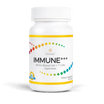

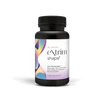


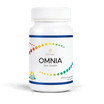

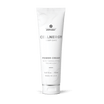
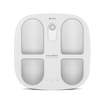









Leave a comment
This site is protected by hCaptcha and the hCaptcha Privacy Policy and Terms of Service apply.